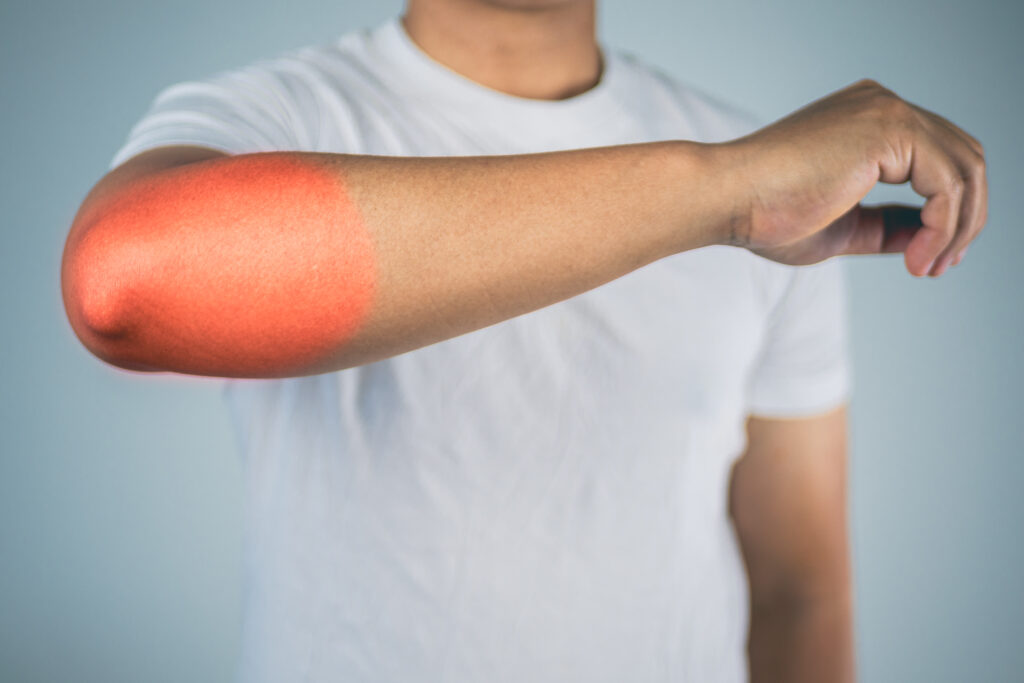When it comes to maximizing your athletic recovery, understanding the right techniques can make all the difference. You're likely aware that factors like nutrition and sleep play an essential role, but have you considered how innovative methods like cryotherapy or active release techniques could enhance your recovery process? It's not just about resting; it's about strategically optimizing every aspect of your routine. As you explore these expert techniques, you might find surprising elements that can elevate your performance to a whole new level. What will you discover next?
Importance of Recovery
Recognizing the importance of recovery is essential for any athlete aiming to enhance performance and prevent injuries. When you push your body to its limits, whether in training or competition, your muscles experience micro-tears and fatigue. Without adequate recovery, these issues can lead to overuse injuries, decreased performance, and burnout.
Prioritizing recovery allows your body to heal and adapt, ultimately helping you reach your goals. You might think that pushing through pain or fatigue is a sign of dedication, but ignoring recovery can backfire. Instead, embrace the concept that recovery is just as vital as training itself.
Effective recovery strategies can include proper nutrition, hydration, sleep, and active recovery techniques like stretching and low-intensity workouts. These methods help replenish energy stores, reduce muscle soreness, and enhance overall performance.
Don't overlook the mental aspect of recovery either. Taking time for rest and relaxation can help you maintain focus and motivation in your training. Engaging in mindfulness practices or even light social activities can revitalize your mental state, making you more resilient in the face of challenges.
Ultimately, recognizing and respecting the importance of recovery can set you apart from others who may underestimate its role. By incorporating recovery into your routine, you'll not only improve your performance but also enjoy the journey of athleticism without the setbacks of injuries.
Make recovery a priority, and watch your athletic prowess flourish.
Cryotherapy Benefits
Incorporating advanced recovery techniques can greatly enhance your athletic performance, and one popular method is cryotherapy. This innovative treatment involves exposing your body to extremely cold temperatures for a short duration, typically around two to three minutes. The chilling effect boosts circulation and reduces inflammation, helping you recover faster from intense workouts or injuries.
One of the key benefits of cryotherapy is its ability to alleviate muscle soreness and stiffness. After a hard training session, your muscles can feel fatigued and tight. Cryotherapy helps to numb the pain and decrease recovery time, allowing you to get back to your training routine sooner.
Plus, it can even improve your overall mood by increasing the release of endorphins, those feel-good hormones that can combat stress and anxiety.
Another advantage is improved sleep quality. Regular sessions can enhance your body's natural healing processes, which can lead to deeper and more restorative sleep. When you're well-rested, your performance and focus improve on the field or in the gym.
Additionally, cryotherapy can help with skin health. The cold exposure tightens pores and boosts collagen production, leading to better skin elasticity and a youthful appearance.
Active Release Techniques
Active Release Techniques (ART) provide a hands-on approach to muscle recovery and injury prevention that can greatly benefit athletes. This method focuses on identifying and treating soft tissue injuries, including muscles, tendons, ligaments, and fascia. By using specific movements and pressure, ART helps to release tension in the muscles and restore peak function.
When you engage in ART, a trained practitioner uses their hands to evaluate your body's texture, tightness, and movement patterns. They'll pinpoint areas of restriction or adhesions, often caused by repetitive motions or overuse. As the practitioner applies targeted pressure, you'll actively participate by moving your body in specific ways. This combination of pressure and movement is designed to break up adhesions and improve flexibility.
One of the key benefits of ART is its ability to enhance blood flow to the affected areas, promoting faster healing. You'll likely notice improved range of motion and reduced pain after just a few sessions.
Additionally, ART can help prevent future injuries by addressing imbalances and dysfunctions in your muscles and connective tissues.
If you're an athlete looking to enhance your recovery process, consider incorporating ART into your routine. It's a valuable tool for anyone who wants to improve performance and maintain their physical condition.
The Role of Nutrition
Nutrition plays an essential role in your recovery process. Understanding macronutrients, timing your nutrient intake, and staying hydrated can greatly enhance your performance and healing.
Let's explore how each of these elements contributes to your athletic recovery.
Importance of Macronutrients
To achieve ideal athletic recovery, understanding the importance of macronutrients is fundamental. Macronutrients—proteins, carbohydrates, and fats—play a significant role in replenishing your body after intense exercise. Each macronutrient serves a specific purpose that supports your recovery process.
Proteins are essential for repairing and building muscle tissues. After a workout, your muscles need amino acids to recover, so don't skimp on protein. Aim for quality sources like lean meats, dairy, beans, and legumes.
Carbohydrates, on the other hand, replenish glycogen stores depleted during physical activity. Consuming carbs after your workouts helps restore your energy levels, making you feel less fatigued and more prepared for your next session.
Focus on complex carbs like whole grains, fruits, and vegetables for sustained energy.
Lastly, healthy fats support hormone production and nutrient absorption. Including sources like avocados, nuts, and olive oil can enhance your overall recovery.
Timing Your Nutrient Intake
Understanding macronutrients is just the beginning; when you consume them also plays an essential role in your recovery. Timing your nutrient intake can greatly enhance your performance and speed up your recovery process.
After intense workouts, your body craves carbohydrates and protein to replenish glycogen stores and repair muscle tissue. Make it a priority to refuel within 30 minutes post-exercise. This window is often called the "anabolic window," where your body's cells are most receptive to nutrients.
Incorporate a balanced mix of protein and carbs during this time. For instance, a protein shake with a banana or a turkey sandwich can do wonders.
But don't stop there; your recovery continues throughout the day. Aim to consume balanced meals every three to four hours to maintain energy levels and support muscle repair.
Pay attention to your pre-workout nutrition as well. Eating a meal rich in complex carbohydrates and moderate protein about two to three hours before exercising can help you perform at your best.
Hydration's Crucial Role
When it comes to maximizing athletic recovery, hydration plays a fundamental role that shouldn't be overlooked. Staying properly hydrated can greatly impact your performance and recovery. Without adequate fluid intake, your body's ability to repair and rebuild is compromised.
Here are four key reasons why hydration is essential for your recovery:
- Regulates Body Temperature: Proper hydration helps regulate your body temperature during and after exercise, preventing overheating.
- Supports Nutrient Transport: Water is vital for transporting nutrients to cells, ensuring that your muscles receive the necessary building blocks for recovery.
- Reduces Muscle Soreness: Staying hydrated can help minimize muscle soreness and stiffness, allowing for a quicker return to training.
- Prevents Fatigue: Dehydration can lead to fatigue, both during exercise and in your recovery phase. Keeping fluids balanced will help you feel more energized.
Make it a habit to drink water consistently throughout the day, and consider electrolytes if you've had an intense workout.
Hydration Strategies
Hydration plays an essential role in athletic recovery, directly impacting your performance and overall well-being. To optimize your recovery process, you'll want to adopt effective hydration strategies that work for you.
First, establish a hydration routine that fits your training schedule. Aim to drink water consistently throughout the day, not just during workouts. A good rule of thumb is to consume at least half your body weight in ounces of water daily.
Before training, hydrate well to guarantee your body has adequate fluids ready for peak performance. If you're engaging in intense exercise lasting longer than an hour, consider incorporating electrolyte-rich drinks to replenish lost minerals.
During workouts, sip on water or your chosen sports drink every 15-20 minutes to maintain hydration levels.
Post-exercise, your body's fluid needs increase, so rehydrate immediately after your session. Aim for 16-24 ounces of fluid for every pound lost during exercise. Monitor your urine color; pale yellow indicates proper hydration, while dark yellow suggests you need more fluids.
Also, don't overlook the importance of incorporating hydrating foods into your diet. Fruits and vegetables like watermelon, oranges, and cucumbers can greatly contribute to your fluid intake.
Finally, keep in mind that individual hydration needs vary based on factors like climate, intensity of exercise, and personal sweat rates. By tailoring your hydration strategies, you'll enhance your recovery, boost your performance, and keep your body in peak condition.
Sleep and Recovery
Getting quality sleep is essential for your recovery and overall performance.
You should aim for the right duration and create an ideal sleep environment to maximize its benefits.
Let's explore how these factors can greatly enhance your athletic recovery.
Importance of Sleep Quality
Quality sleep plays an essential role in athletic recovery, impacting everything from muscle repair to mental focus. When you prioritize sleep quality, you're giving your body the chance to rejuvenate and recover effectively.
Here are four key reasons why sleep quality matters:
- Muscle Repair: During deep sleep, your body releases growth hormones that aid in muscle repair and growth, helping you bounce back stronger after intense workouts.
- Cognitive Function: Quality sleep enhances your mental clarity, reaction time, and decision-making skills, all vital for peak performance during training and competitions.
- Mood Regulation: Poor sleep can lead to irritability and anxiety, negatively affecting your motivation and overall mindset. High-quality sleep fosters a positive mental state, essential for achieving your goals.
- Immune Function: Sleep boosts your immune system, reducing the risk of illness and injury. This means you can train consistently without interruptions, supporting long-term athletic development.
Incorporating strategies to improve your sleep quality can make a significant difference in your recovery process.
Sleep Duration Guidelines
Understanding how much sleep you need is just as important as ensuring its quality. For most adults, aiming for 7 to 9 hours of sleep per night is ideal. If you're an athlete, you might need even more—up to 10 hours—to support your training and recovery. Individual requirements can vary based on factors like age, fitness level, and intensity of training.
Pay attention to how you feel after different amounts of sleep. If you're frequently tired, irritable, or struggling with concentration, you may not be getting enough rest. Establishing a consistent sleep schedule helps regulate your body's internal clock, making it easier to fall asleep and wake up refreshed.
Consider your training cycles, too. During periods of intense training or competition, prioritize extra sleep to help your body recover. Naps can also be beneficial; a short 20-30 minute nap can boost your energy and performance without interfering with nighttime sleep.
Ultimately, listen to your body. Finding what works best for you may take time, but ensuring you get adequate sleep is essential for maximizing your athletic recovery and performance.
Sleep Environment Optimization
A well-optimized sleep environment can greatly enhance your recovery and overall athletic performance. To guarantee you're getting the most restorative sleep possible, consider these key elements:
- Darkness: Use blackout curtains or a sleep mask to block out any light. Darkness signals your body to produce melatonin, which promotes better sleep.
- Temperature: Keep your bedroom cool, ideally between 60-67°F (15-19°C). A cooler environment helps lower your body temperature, which is essential for deep sleep.
- Noise Control: Minimize disruptive sounds by using earplugs or a white noise machine. Consistent background noise can mask sudden interruptions that might wake you up.
- Comfortable Bedding: Invest in a quality mattress and pillows that support your sleeping position. Comfort is key to falling asleep quickly and maintaining a restful night.
Stretching and Flexibility
Incorporating stretching and flexibility exercises into your routine can greatly boost your athletic recovery. After intense workouts, your muscles can become tight, leading to discomfort and decreased range of motion. By making stretching a priority, you enhance blood flow to your muscles, which helps to reduce soreness and expedite healing.
Start with dynamic stretches before your workouts to warm up your muscles and improve flexibility. Movements like leg swings and arm circles prepare your body for activity.
After your workouts, focus on static stretching, holding each stretch for 15-30 seconds. This can help lengthen your muscles and restore them to their natural state. Target key muscle groups such as your hamstrings, quadriceps, shoulders, and hip flexors for peak recovery.
In addition to promoting flexibility, stretching can help prevent injuries. When your muscles and joints maintain a healthy range of motion, you lower the risk of strains and sprains.
Incorporating yoga or Pilates into your routine can also enhance your flexibility while providing a holistic approach to recovery. Aim to stretch at least three times a week, but daily practice is even more beneficial.
Listen to your body; if you feel tightness or discomfort, don't ignore it. Regular stretching can lead to long-term benefits, including improved athletic performance and quicker recovery times.
Massage Therapy Options
When it comes to massage therapy, you'll find various techniques tailored to your needs.
Regular sessions can greatly enhance your recovery, reduce muscle tension, and improve overall performance.
Let's explore the different types of massage and their unique benefits for athletes like you.
Types of Massage Techniques
Exploring various massage techniques can greatly enhance your athletic recovery. Each technique serves a unique purpose, addressing different needs in your body.
Here are four popular massage methods you might consider:
1. Swedish Massage: This technique uses long strokes, kneading, and gentle movements to relax and energize your muscles.
It's perfect for reducing stress and improving circulation.
2. Deep Tissue Massage: Focusing on deeper layers of muscle and connective tissue, this method targets chronic tension and pain.
It's particularly beneficial if you've got specific areas that need more attention.
3. Sports Massage: Specifically designed for athletes, this technique combines various methods to improve flexibility and prevent injuries.
It's great for both pre- and post-competition recovery.
4. Myofascial Release: This approach involves gentle sustained pressure on the fascia, helping to release muscle tightness and restore mobility.
It's ideal for enhancing range of motion.
Benefits of Regular Sessions
Regular massage therapy sessions can greatly enhance your athletic recovery and overall well-being. By committing to this practice, you'll experience a range of benefits that directly impact your performance.
First, regular massages improve circulation, which helps deliver crucial nutrients to your muscles and aids in the removal of metabolic waste. This means quicker recovery times after intense workouts.
Additionally, consistent massage therapy reduces muscle tension and soreness. You'll find that with less tightness, your flexibility and range of motion improve, allowing you to train more effectively. It also plays a critical role in injury prevention; by addressing muscle imbalances and identifying areas of concern early, you can avoid more significant issues down the road.
Moreover, the mental benefits shouldn't be overlooked. Regular sessions help reduce stress and anxiety, promoting better focus and mental clarity during training and competitions. You'll feel more relaxed and ready to tackle your workouts.
Incorporating regular massage therapy into your routine isn't just a luxury; it's an essential part of a thorough recovery strategy that can keep you performing at your best. Make it a priority, and you'll see the difference it makes in your athletic journey.
Mental Recovery Practices
Mental recovery practices are crucial for athletes looking to enhance their performance and overall well-being. Taking care of your mental health is just as important as your physical recovery. Incorporating these practices into your routine can help you regain focus, reduce stress, and improve your game.
Here are four effective mental recovery practices you should consider:
- Mindfulness Meditation: Spend a few minutes each day practicing mindfulness. This allows you to stay present, reduce anxiety, and improve your concentration. It's a powerful tool for calming your mind after a tough training session.
- Visualization Techniques: Picture yourself succeeding in your sport. Visualizing your performance can boost your confidence and help you prepare mentally for competitions. Imagine every detail, from your movements to the sounds around you.
- Journaling: Write down your thoughts and feelings about your training and competition experiences. Journaling can help you process emotions, track your progress, and reflect on what works and what doesn't.
- Breath Control Exercises: Practice deep breathing exercises to help manage stress and anxiety. Controlled breathing can enhance your focus and help you remain calm under pressure.
Incorporating these mental recovery practices into your routine can lead to a more balanced mindset, enabling you to perform at your best.
Recovery Technology Innovations
As an athlete, embracing recovery technology innovations can greatly enhance your performance and expedite your recovery process.
Today's advancements are designed to help you bounce back faster, allowing you to train harder and compete better.
One popular innovation is the use of compression therapy devices. These tools apply pressure to your limbs, promoting blood flow and reducing muscle soreness. You can use them post-workout or during long recovery periods, making them a convenient addition to your routine.
Another game-changer is cryotherapy. This method exposes your body to extremely cold temperatures for a short duration, helping to reduce inflammation and accelerate healing. Many athletes swear by regular cryo sessions to alleviate muscle pain and stiffness.
You might also consider infrared therapy, which utilizes light to penetrate your skin and promote healing at a cellular level. This technology can help improve circulation and reduce recovery times, making it an excellent option for serious athletes.
Wearable technology has also made strides, providing real-time data on your heart rate, sleep patterns, and muscle recovery. By tracking these metrics, you can tailor your recovery strategies and make informed decisions about your training regimen.
Finally, don't overlook the benefits of electrical stimulation devices. These tools can aid in muscle recovery and pain relief, giving you an edge in your training.
Incorporating these recovery technology innovations into your routine can make a significant difference in your athletic performance.
Embrace these tools, and watch your recovery soar.
Conclusion
Incorporating these expert techniques into your recovery routine can greatly enhance your athletic performance. Prioritizing rest, nutrition, hydration, and active recovery helps your body repair and grow stronger. Don't underestimate the power of innovative recovery technologies and mental practices, either; they can elevate your recovery process. By embracing these strategies, you'll not only reduce the risk of injuries but also guarantee you're always ready to perform at your best. Start maximizing your recovery today!



